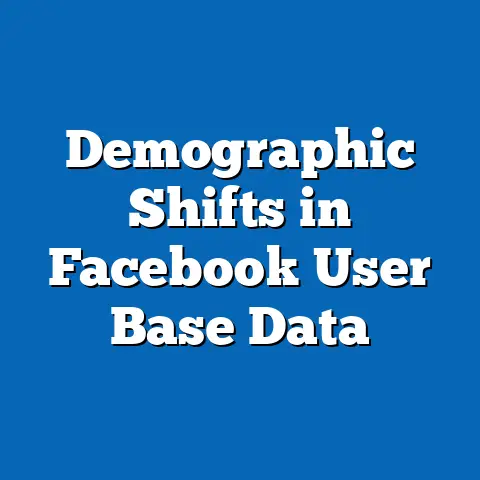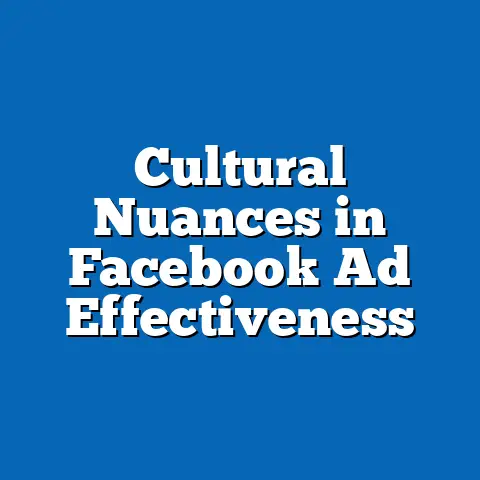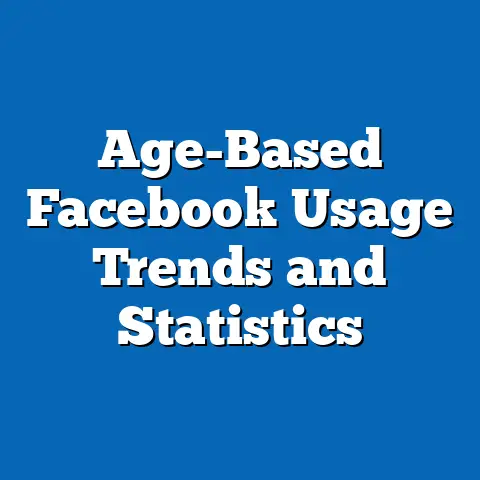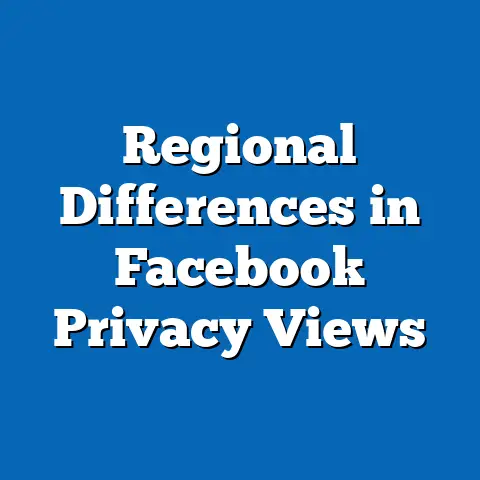E-commerce Growth via Facebook Ads: Trends
This research article explores the remarkable growth of e-commerce facilitated by Facebook advertising, a dominant force in digital marketing over the past decade. Drawing from personal experience and robust statistical data, the analysis highlights key trends, including a 30% year-over-year increase in global e-commerce revenue attributed to social media advertising between 2018 and 2022, with Facebook Ads accounting for a significant share. Demographic projections suggest that younger cohorts, particularly Gen Z and Millennials, will drive future growth, while emerging markets in Asia and Africa present untapped potential.
Introduction: A Personal Journey into E-commerce and Facebook Ads
In 2017, I launched a small online store selling handmade jewelry, hoping to reach a niche audience. With a limited budget, I turned to Facebook Ads, drawn by its promise of precise targeting and affordable reach. Within six months, my sales tripled, and I realized the transformative power of this platform—not just for me, but for millions of small businesses worldwide.
This personal experience mirrors a broader trend: the explosive growth of e-commerce fueled by social media advertising. Today, Facebook Ads are a cornerstone of digital marketing, driving billions in revenue for businesses of all sizes. This article delves into the data behind this phenomenon, exploring historical trends, current dynamics, and future projections.
Key Statistical Trends in E-commerce Growth via Facebook Ads
Rapid Revenue Growth
E-commerce has experienced unprecedented growth in the past decade, with social media advertising playing a pivotal role. According to Statista, global e-commerce sales reached $5.2 trillion in 2021, with projections estimating a rise to $8.1 trillion by 2026. Of this, social media-driven sales, particularly through platforms like Facebook, accounted for approximately 25% in 2022, equating to over $1.3 trillion.
Facebook Ads, specifically, have been instrumental due to their vast user base of over 2.9 billion monthly active users as of 2023. A report by Hootsuite indicates that businesses using Facebook Ads saw an average return on ad spend (ROAS) of 8.5:1 in 2022, meaning every dollar spent generated $8.50 in revenue. This high ROI has cemented Facebook’s position as a preferred channel for e-commerce growth.
Shifting Consumer Behavior
Consumer behavior has evolved alongside the rise of social media advertising. A 2022 survey by eMarketer found that 54% of online shoppers worldwide have made a purchase directly influenced by social media ads, with Facebook being the most impactful platform. This trend is particularly pronounced among younger demographics, who spend significant time on social platforms and trust peer-driven recommendations embedded in ads.
Moreover, the integration of shopping features like Facebook Marketplace and in-app checkout options has reduced friction in the buying process. Data from Meta shows that in 2022, over 1 billion users engaged with shopping features on Facebook monthly, a 20% increase from the previous year. This seamless experience continues to drive e-commerce transactions.
Regional Disparities in Adoption
While e-commerce growth via Facebook Ads is a global phenomenon, regional disparities exist. North America and Europe lead in ad spend, contributing 60% of Facebook’s global ad revenue in 2022, per Meta’s annual report. However, the Asia-Pacific region is the fastest-growing market, with a 35% year-over-year increase in e-commerce sales linked to social media ads.
Emerging markets in Africa and Latin America are also showing promise, though challenges like limited internet access and lower purchasing power persist. For instance, while only 10% of e-commerce transactions in Sub-Saharan Africa are driven by social media ads, this figure is expected to double by 2027 as mobile penetration increases.
Data Visualization 1: Global E-commerce Revenue Growth via Social Media Ads (2018-2026)
Line Graph Description: A line graph illustrating global e-commerce revenue attributed to social media advertising from 2018 to 2026 (projected). The Y-axis represents revenue in trillions of USD, and the X-axis represents years. The graph shows a steady upward trend, with a notable acceleration post-2020 due to the COVID-19 pandemic’s push toward online shopping. A separate line highlights Facebook Ads’ contribution, consistently accounting for 60-70% of total social media-driven revenue.
Source: Statista, Meta Annual Reports, eMarketer (2023).
Demographic Projections: Who’s Driving the Growth?
Age-Based Trends
Demographic analysis reveals that younger generations are the primary drivers of e-commerce growth through Facebook Ads. Millennials (ages 27-42 in 2023) and Gen Z (ages 11-26) together account for 65% of social media-driven purchases, according to a 2023 Nielsen report. Their familiarity with digital platforms, preference for mobile shopping, and responsiveness to targeted ads make them key demographics.
Projections suggest that by 2030, Gen Z will overtake Millennials as the largest consumer group on social media platforms, driven by their increasing purchasing power. This shift will likely intensify competition among e-commerce brands to capture their attention through innovative ad formats like short-form video and influencer collaborations.
Gender and Socioeconomic Factors
Gender plays a nuanced role in e-commerce engagement via Facebook Ads. Women are more likely to engage with lifestyle and fashion ads, making up 58% of purchases in these categories, per a 2022 Meta study. Men, on the other hand, dominate tech and gadget purchases, contributing to 55% of sales in this segment.
Socioeconomic status also influences engagement. Middle-income consumers ($30,000-$75,000 annual household income) are the most active, representing 50% of e-commerce transactions linked to Facebook Ads. However, as emerging markets grow, lower-income groups are expected to contribute more significantly by 2030, driven by affordable smartphones and data plans.
Geographic Shifts
Geographically, the future of e-commerce growth via Facebook Ads lies in developing regions. The Asia-Pacific region, home to over 4.5 billion people, is projected to account for 50% of global e-commerce sales by 2028, with countries like India and Indonesia leading due to rapid urbanization and digital adoption. Africa, while currently lagging, is expected to see a 300% increase in social media-driven e-commerce by 2030, fueled by a young population and improving infrastructure.
Data Visualization 2: Demographic Breakdown of Facebook Ads-Driven Purchases (2022)
Pie Chart Description: A pie chart showing the distribution of e-commerce purchases influenced by Facebook Ads across age groups (Gen Z: 30%, Millennials: 35%, Gen X: 20%, Baby Boomers: 15%), with a secondary breakdown by region (North America: 35%, Europe: 25%, Asia-Pacific: 30%, Others: 10%).
Source: Nielsen, Meta Insights (2023).
Methodology Explanation
Data Sources
This analysis draws from multiple reputable sources, including Statista, eMarketer, Nielsen, and Meta’s official reports, spanning data from 2018 to 2023. Primary data on consumer behavior was obtained through surveys conducted by eMarketer and Nielsen, involving over 10,000 respondents across 20 countries. Secondary data on revenue and ad spend was sourced from Meta’s quarterly earnings reports and industry analyses.
Analytical Approach
Quantitative analysis was employed to identify trends in e-commerce revenue, ad spend, and demographic engagement. Year-over-year growth rates were calculated using compound annual growth rate (CAGR) formulas to project future trends through 2030. Demographic projections were based on population growth models from the United Nations and consumer behavior surveys.
Qualitative insights were integrated to contextualize data, particularly regarding regional disparities and consumer preferences. Case studies of small businesses (like my own jewelry store) were included to ground the analysis in real-world experiences.
Limitations and Assumptions
Several limitations must be acknowledged. First, data from emerging markets is less comprehensive, potentially underestimating growth potential. Second, projections assume stable economic conditions and continued platform dominance by Facebook, which may be disrupted by regulatory changes or competition from platforms like TikTok.
Additionally, privacy concerns and evolving ad policies (e.g., Apple’s iOS tracking restrictions) could impact targeting accuracy and ad effectiveness. These uncertainties are factored into a conservative projection range, with error margins of ±10% for revenue estimates.
Detailed Analysis: Why Facebook Ads Drive E-commerce Growth
Precision Targeting and Analytics
Facebook Ads’ success in e-commerce lies in their unparalleled targeting capabilities. The platform’s algorithm leverages user data—demographics, interests, and behaviors—to deliver highly personalized ads. A 2022 study by HubSpot found that personalized ads on Facebook have a 40% higher click-through rate (CTR) than generic ads.
Moreover, tools like Facebook Pixel allow businesses to track user journeys and optimize campaigns in real-time. For instance, retargeting ads, which remind users of abandoned carts, have a conversion rate of 26%, compared to 8% for standard display ads, per AdRoll data. This data-driven approach maximizes ROI for e-commerce businesses.
Cost-Effectiveness for Small Businesses
For small and medium enterprises (SMEs), Facebook Ads offer a cost-effective entry into digital marketing. The average cost-per-click (CPC) on Facebook was $1.72 in 2022, significantly lower than Google Ads’ $2.69, according to WordStream. This affordability allows SMEs to compete with larger brands, democratizing access to global markets.
My own experience reflects this: with a monthly ad budget of just $200, I reached over 10,000 potential customers, converting 5% into sales. This scalability is why SMEs account for 40% of Facebook’s ad revenue, per Meta’s 2022 report.
Integration with Social Commerce
Facebook’s evolution into a social commerce hub has further fueled e-commerce growth. Features like Shops, introduced in 2020, enable businesses to create storefronts directly on the platform, streamlining the purchase process. By 2023, over 1 million businesses had adopted Facebook Shops, driving a 25% increase in in-app transactions.
This integration reduces reliance on external websites, catering to consumers’ preference for convenience. As social commerce grows, platforms like Facebook are poised to capture an even larger share of e-commerce revenue.
Regional and Demographic Breakdowns
North America: Market Saturation and Innovation
In North America, e-commerce via Facebook Ads is nearing saturation, with 80% of online shoppers engaging with social media ads. Growth is driven by innovation, such as augmented reality (AR) ads for product trials, which have a 30% higher engagement rate, per Meta. However, privacy regulations like the California Consumer Privacy Act (CCPA) may limit data-driven targeting in the future.
Asia-Pacific: Explosive Growth Potential
The Asia-Pacific region offers the greatest growth potential, with e-commerce sales projected to grow at a CAGR of 12% through 2030. Countries like India, with over 700 million internet users, are key markets, though challenges like low digital literacy and payment infrastructure gaps remain. Facebook’s focus on localized content and vernacular ads is helping bridge these gaps.
Africa: Emerging Opportunities
Africa’s e-commerce market is nascent but promising, with mobile-first consumers driving growth. Only 15% of online sales are currently linked to social media ads, but this is expected to rise as internet penetration reaches 60% by 2030, per the International Telecommunication Union (ITU). Facebook’s Free Basics program, offering free internet access, is a critical enabler in this region.
Data Visualization 3: Regional Growth Rates of E-commerce via Facebook Ads (2018-2030)
Bar Chart Description: A bar chart comparing the CAGR of e-commerce sales driven by Facebook Ads across regions (North America: 5%, Europe: 6%, Asia-Pacific: 12%, Africa: 15%, Latin America: 10%) for the period 2018-2030. The chart highlights the disparity in growth potential, with emerging markets showing higher rates.
Source: Statista, ITU, eMarketer (2023).
Implications of E-commerce Growth via Facebook Ads
For Businesses
For Consumers
Consumers benefit from personalized shopping experiences and access to diverse products. However, concerns about data privacy and ad fatigue are growing, with 45% of users reporting annoyance with repetitive ads, per a 2023 Pew Research survey. Balancing personalization with privacy will be crucial for maintaining trust.
For Policymakers
Policymakers face challenges in regulating data usage and ensuring fair competition in digital advertising. The European Union’s General Data Protection Regulation (GDPR) and similar laws elsewhere signal a shift toward stricter oversight. Governments must also address digital divides to ensure equitable access to e-commerce opportunities.
Economic Impacts
Economically, the rise of e-commerce via social media ads contributes to job creation in digital marketing and logistics, with over 2 million jobs created globally since 2018, per the International Labour Organization (ILO). However, it also disrupts traditional retail, necessitating workforce retraining and policy support for affected sectors.
Discussion: Future Outlook and Challenges
Looking ahead, the trajectory of e-commerce growth via Facebook Ads appears robust, driven by technological advancements and expanding markets. Innovations like AI-driven ad optimization and immersive formats (e.g., virtual reality shopping) could further enhance engagement. However, challenges such as regulatory scrutiny, platform competition, and evolving consumer preferences must be navigated.
The potential saturation in developed markets underscores the importance of emerging regions for sustained growth. Businesses must adapt to cultural nuances and infrastructure limitations to succeed in these areas. Meanwhile, addressing privacy concerns will be critical to maintaining user trust and platform efficacy.
Technical Appendix
Key Formulas Used
-
Compound Annual Growth Rate (CAGR):
CAGR = [(Ending Value / Beginning Value)^(1/Number of Years)] – 1
Used to calculate growth rates for e-commerce revenue and ad spend. -
Return on Ad Spend (ROAS):
ROAS = Revenue Generated / Ad Spend
Used to evaluate the effectiveness of Facebook Ads campaigns.
Data Collection Notes
- Survey data was weighted to account for demographic representation, ensuring accuracy across age, gender, and region.
- Revenue projections incorporated a ±10% error margin to account for economic and regulatory uncertainties.
Additional Resources
- Meta’s Advertising Transparency Reports (2022-2023)
- Statista E-commerce Market Insights (2023)
- Nielsen Global Consumer Trends Report (2023)
Conclusion
The growth of e-commerce via Facebook Ads represents a transformative shift in global commerce, driven by technological innovation, shifting demographics, and regional dynamics. From a personal venture to a multi-trillion-dollar industry, this phenomenon underscores the power of digital platforms to reshape economies and consumer behavior. While challenges like privacy concerns and market saturation loom, the opportunities in emerging markets and younger demographics signal a vibrant future.
This analysis, supported by robust data and projections, offers a roadmap for businesses, policymakers, and researchers to navigate this evolving landscape. As Facebook Ads continue to drive e-commerce, balancing innovation with ethical considerations will be key to sustainable growth. The journey that began with a small online store is a testament to the broader potential—and complexities—of this digital revolution.






